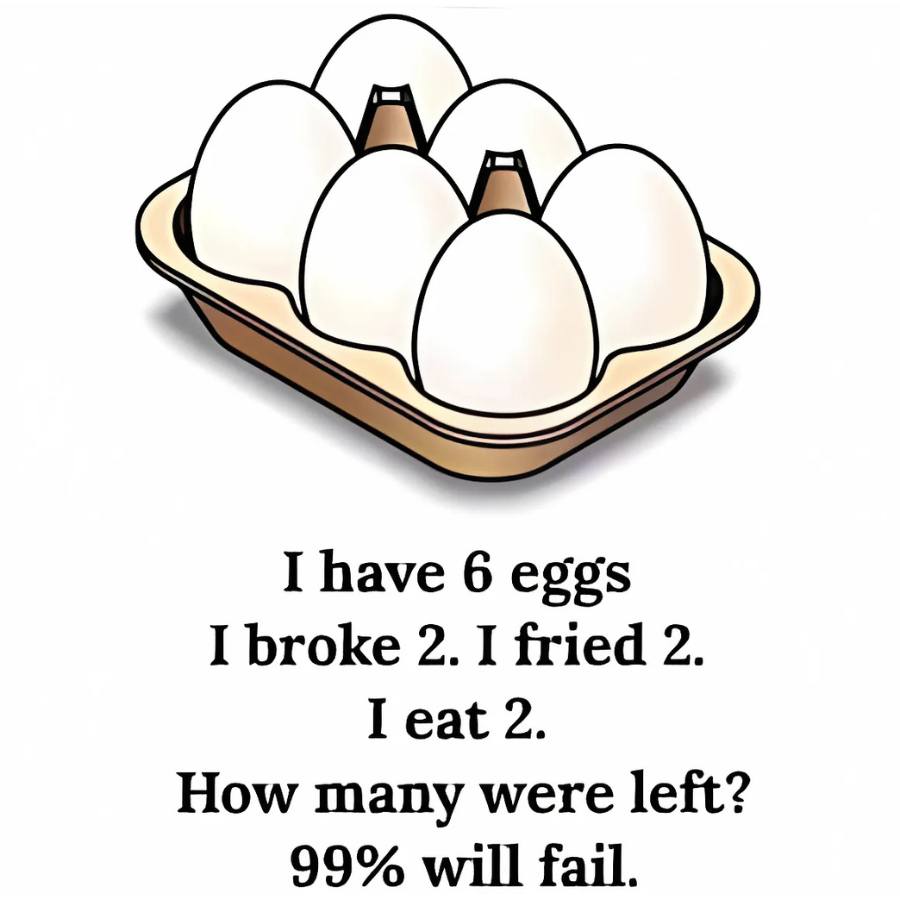Riddles are like mental workouts, challenging us to think beyond the obvious and spot the hidden logic. The “How many eggs are left?” riddle is a perfect example—it seems simple, but its clever twist catches most people off guard. Let’s explore this puzzle step by step to see why it’s such a great lesson in clear thinking and how it reveals the power of careful reasoning.
The riddle is short and sweet: you have 6 eggs. You break 2, cook 2, and eat 2. How many eggs are left? It sounds like basic subtraction, but the answer—4 eggs—surprises many. The trick lies in how the riddle makes you assume more eggs are used than actually are, turning a simple question into a brain teaser that’s both fun and educational.

Here’s the logic: you start with 6 eggs. Breaking 2 eggs leaves 4 whole ones. Then, you cook the 2 eggs you broke, so the 4 whole eggs remain untouched. Finally, you eat the 2 cooked eggs, still leaving the 4 whole eggs behind. The secret is that the same 2 eggs are broken, cooked, and eaten, so the other 4 eggs never come into play.
What makes this riddle so tricky is its wording. It’s easy to think each action—breaking, cooking, eating—uses different eggs, which would use up all 6. But the riddle describes a sequence where the same 2 eggs go through all three steps. This teaches us to read carefully and not let assumptions cloud our logic, a skill that’s useful far beyond puzzles.
Riddles like this are more than just fun—they train us to think critically and question what we assume. The egg riddle shows how small details can change everything, making it a great tool for learning. Next time someone asks, “How many eggs are left?” you’ll confidently say 4 and explain the clever logic. Share this puzzle with others and enjoy watching them discover the answer through the same exciting process you did!


